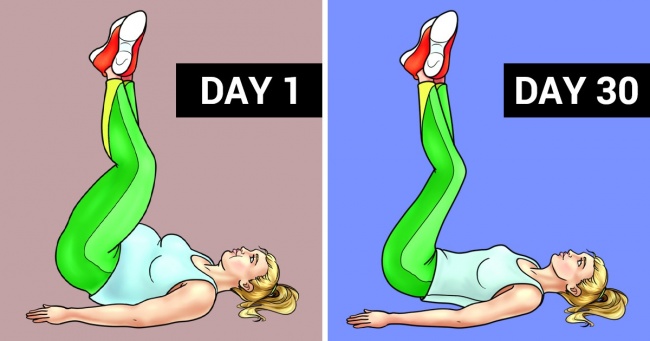In today’s fast-paced world, finding time for fitness can feel overwhelming. But what if a simple 21-minute habit could transform your health? Research shows that walking for just 21 minutes after meals can significantly improve weight management, blood sugar control, and overall wellness. This science-backed practice is accessible, free, and requires no special equipment. Let’s explore how this small commitment can deliver big results.
The Science Behind Post-Meal Walking: Why Timing Matters
Walking after eating isn’t just a folk remedy—it’s a strategy supported by science. When you eat, your body converts food into glucose, which spikes blood sugar levels. Physical activity like walking helps muscles absorb this glucose, reducing the need for insulin. A study published in Diabetes Care found that a 15-minute walk after each meal was more effective at lowering blood sugar than a single 45-minute walk in the morning. Extending this to 21 minutes amplifies benefits, balancing practicality and impact.

How Walking After Meals Accelerates Weight Loss
Burns Calories Without Overexertion
Walking is a low-impact exercise that torches calories without stressing joints. A 21-minute brisk walk after meals can burn 90–150 calories, depending on weight and pace. Over time, this daily habit could help shed up to 1 pound every 2–3 weeks, making it a sustainable weight loss tool.
Boosts Metabolism and Fat Burning
Post-meal walking kickstarts your metabolism, helping your body process food efficiently. According to the American Council on Exercise, walking after eating increases lipolysis, the process of breaking down fat for energy. This effect is heightened when walking in a fasted state (like morning walks), but post-meal walks prevent glucose spikes that lead to fat storage.
Curbs Cravings and Overeating
Physical activity suppresses appetite-regulating hormones like ghrelin. A 2016 study found that short walks after meals reduced cravings for sugary snacks, aiding portion control and mindful eating.
Walking After Meals and Blood Sugar Control: A Game-Changer for Diabetics
Lowers Postprandial Glucose Spikes
For those with diabetes or prediabetes, managing blood sugar is critical. Walking after meals helps muscles absorb glucose, reducing spikes. A Journal of Clinical Endocrinology & Metabolism study showed that 20 minutes of post-dinner walking lowered blood sugar by 22% in individuals with type 2 diabetes.

Improves Insulin Sensitivity
Regular post-meal walks enhance insulin sensitivity, meaning your body needs less insulin to manage glucose. This is especially beneficial for insulin-resistant individuals, as noted by the American Diabetes Association.
Reduces Risk of Type 2 Diabetes
Consistent walking after eating can prevent diabetes. A Harvard School of Public Health report linked 30 minutes of daily walking to a 30% lower risk of developing type 2 diabetes.

Why 21 Minutes? The Optimal Duration for Post-Meal Walks
While studies often cite 15–30 minutes, 21 minutes strikes a balance between effectiveness and practicality. Here’s why:
- Glucose Management: Research shows significant blood sugar reductions within 15–30 minutes of walking.
- Digestive Benefits: A 21-minute walk aids digestion by stimulating gastric enzymes without causing discomfort.
- Consistency: Shorter durations are easier to maintain long-term, fostering habit formation.
How to Incorporate a 21-Minute Walk into Your Routine
Start Slow and Build Gradually
If you’re new to post-meal walking, begin with 10 minutes and work up to 21. Focus on consistency over intensity.
Make It Enjoyable
- Walk with a friend or pet.
- Listen to podcasts or music.
- Explore scenic routes to stay motivated.
Schedule Smartly
Align walks with meals:
- After Breakfast: Jumpstart metabolism.
- After Lunch: Combat midday energy slumps.
- After Dinner: Aid digestion and improve sleep quality.
Common Mistakes to Avoid When Walking After Meals
Walking Too Vigorously
Avoid high-intensity walks immediately after eating, as they may cause indigestion. Opt for a brisk but comfortable pace.
Ignoring Hydration
Drink water before and after your walk to stay hydrated and support your metabolism.
Skipping Warm-Ups
Dynamic stretches like leg swings or torso twists prepare muscles and prevent injury.
Real-Life Success Stories: How Post-Meal Walking Transformed Lives
Sarah’s Weight Loss Journey
Sarah, a 42-year-old teacher, lost 18 pounds in 4 months by walking 21 minutes after dinner. “It became my ‘me time’—I slept better and felt more energized,” she shared.
John’s Diabetes Management
John, diagnosed with prediabetes, reduced his HbA1c levels by 1.2% in 3 months through post-meal walks. “My doctor was amazed,” he said.
Conclusion: Take the First Step Toward Better Health
A 21-minute walk after meals is a simple yet powerful tool for weight loss, blood sugar control, and overall vitality. By prioritizing this habit, you’ll not only improve physical health but also boost mental clarity and emotional well-being. Ready to start? Lace up your shoes, step outside, and embrace the transformative power of walking.
External References:









Leave a Reply